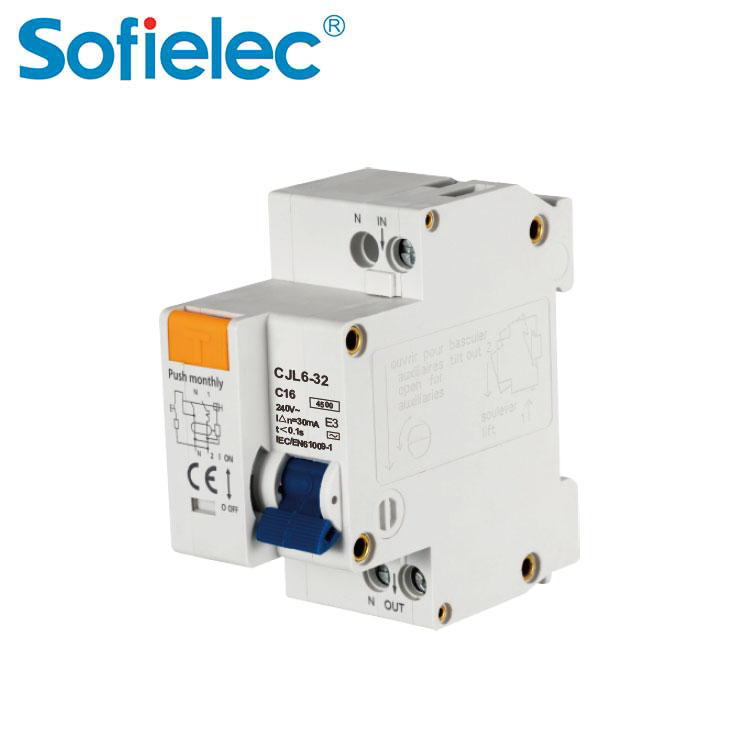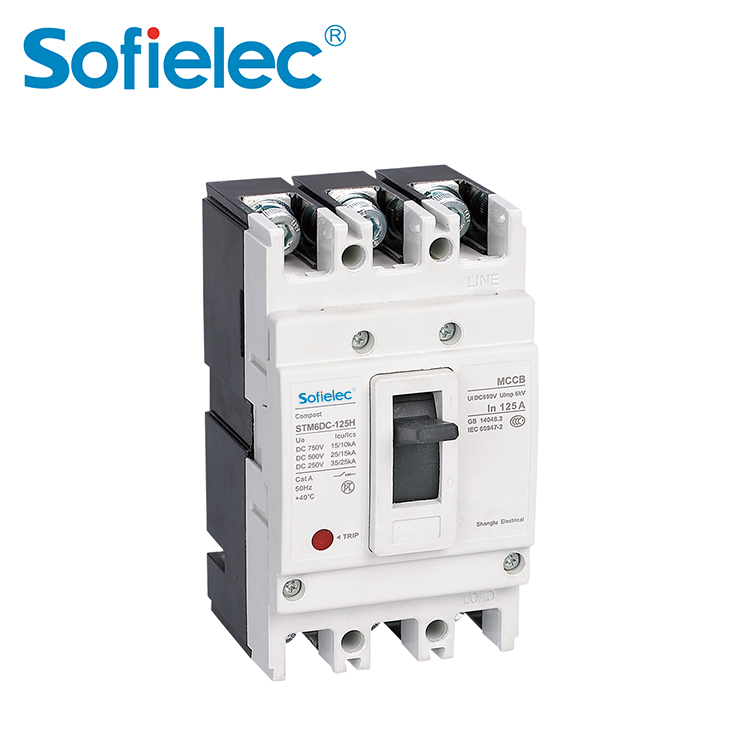The structure and principle of MCB
Miniature circuit breakers (micro-breaks) are the most common basic electrical components in engineering, equipment and households. This article will introduce the principles, parameters, and selection principles of micro-breaks.
The structure and principle of MCB
1. Structure:
From Figure 1 you can clearly see that the structure of the micro-break is not complicated. Compared with the schematic diagram of Figure 2, we can see that the micro-break is mainly composed of the operating mechanism, incoming and outgoing terminals, contacts, magnetic trip coils, and thermal trip bimetal. It is composed of 6 parts, such as chip and arc extinguishing unit.

2. MCB Working principle:
The two most basic functions of micro-break are short-circuit trip and overload trip.
(1) Magnetic tripping is a tripping method that uses the magnetic field generated by the magnetic tripping coil to attract the armature to trigger the tripping mechanism. Magnetic tripping can break the line instantly, so it is used for short-circuit protection.
(2) Thermal tripping is a tripping method in which the bimetallic strip is deformed by the heat generated by the overload current to trigger the tripping mechanism. Due to the slow deformation speed of the metal sheet, it is only used for long-time overload protection.

Selection
In practical applications, the selection of micro-breaks can not only consider the rated voltage and current, and at the same time, it is necessary to comprehensively consider other performance indicators to determine the selection based on specific working conditions.
1. Ultimate short-circuit breaking capacity and operating short-circuit breaking capacity
The short-circuit breaking capacity is divided into the ultimate short-circuit breaking capacity and the operating short-circuit breaking capacity:
(1) Ultimate short-circuit breaking capacity ICU—According to the conditions specified in the prescribed test procedures, excluding the breaking capacity of the circuit breaker to continue to carry its rated current capacity, in plain language, it means that this circuit breaker has a short-circuit fault when in use It can break the expected maximum short-circuit current without causing damage to the circuit, and protect the circuit, but this micro-break is damaged or burned and can no longer be used.
(2) Operating short-circuit breaking capacity ICS—According to the conditions specified in the prescribed test procedures, including the breaking capacity of the circuit breaker to continue to carry its rated current capacity, in plain language, it means that when the circuit breaker is in use, the line has a short circuit fault It can break not more than a certain percentage of the expected maximum short-circuit current without causing damage to the line. The line is protected and the circuit breaker itself can still be used without damage.
2.Tripping Curve


1) The tripping current of the B-type trip unit is> 3In~5In, which means: when the instantaneous current is 3 times the rated current, the product using this type of trip unit should not operate within ≥0.1s, and in At 5In, 100% action must be performed within <0.1s, and it is possible to set the instantaneous action current between 3In~5In, but the premise is to ensure that 100% does not malfunction at 3In. This set the current between 3In~5In, if used Of course, the test current of 5In will act 100%.
The tripping current of the C-type release is >5In~10In, and the tripping current of the D-type release is >10In~20In. Their meanings can be deduced by analogy with the B-type release.
(2) The scope of application of products with B, C, and D type instantaneous releases:
Type B: The current of the trip unit is 3In~5In, which is a standard feature and is used in the socket circuit of residential buildings and special buildings. Type B is not common in practical applications.
Type C: The current of the trip unit is 5In~10In, which is preferably used to connect high-current electrical equipment, such as lighting and motors, and is especially suitable for household places.
Type D: The current of the trip unit is 10In~20In, which is suitable for electrical equipment that generates pulses, such as transformers, electric welders, solenoid valves, capacitors, and power protection.
1) The tripping current of the B-type trip unit is> 3In~5In, which means: when the instantaneous current is 3 times the rated current, the product using this type of trip unit should not operate within ≥0.1s, and in At 5In, 100% action must be performed within <0.1s, and it is possible to set the instantaneous action current between 3In~5In, but the premise is to ensure that 100% does not malfunction at 3In. This set the current between 3In~5In, if used Of course, the test current of 5In will act 100%.
The tripping current of the C-type release is >5In~10In, and the tripping current of the D-type release is >10In~20In. Their meanings can be deduced by analogy with the B-type release.
(2) The scope of application of products with B, C, and D type instantaneous releases:
Type B: The current of the trip unit is 3In~5In, which is a standard feature and is used in the socket circuit of residential buildings and special buildings. Type B is not common in practical applications.
Type C: The current of the trip unit is 5In~10In, which is preferably used to connect high-current electrical equipment, such as lighting and motors, and is especially suitable for household places.
Type D: The current of the trip unit is 10In~20In, which is suitable for electrical equipment that generates pulses, such as transformers, electric welders, solenoid valves, capacitors, and power protection.





